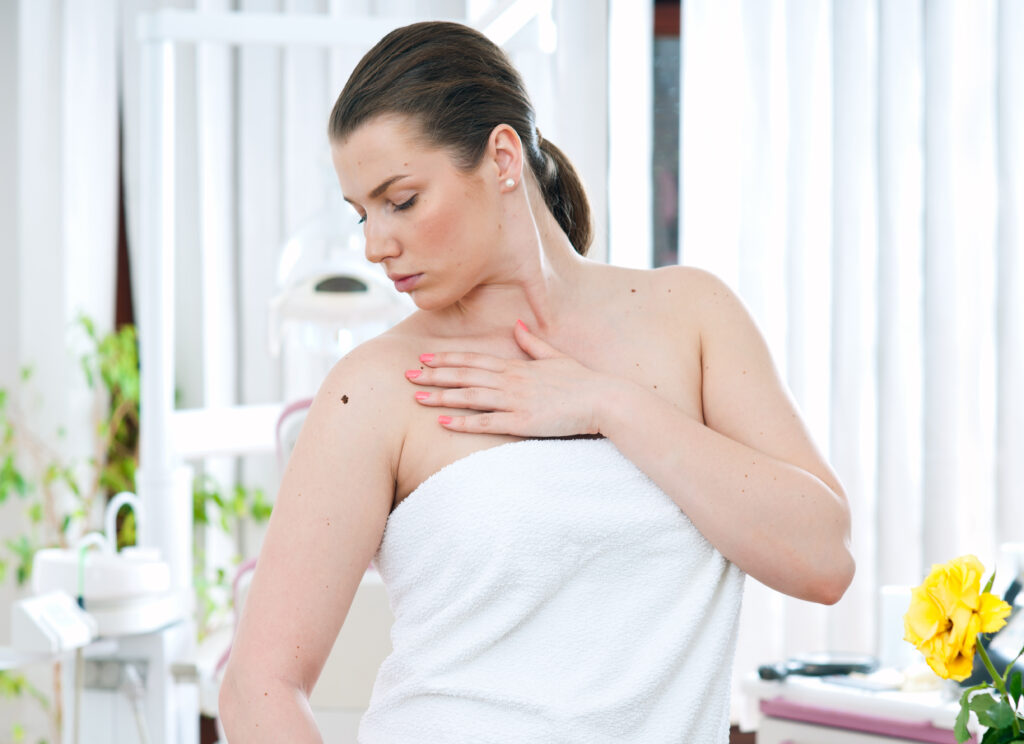dnberty/iStock
Q: What is it that makes my skin develop multiple skin cancers, while someone else never gets one?
Deborah S. Sarnoff, MD: Mostly we blame it on exposure to dangerous ultraviolet (UV) radiation from the sun or from tanning beds, but there can be other factors as well. When UV light hits your skin, it causes DNA damage to the skin cells in that area. Let’s say, for example, that you live in a warm climate, you roll up your sleeves and roll down the car window often on your drive to work. Your bare left forearm gets direct sun several days a week. In fact, it may look quite different from your right arm, with more sunburns, tanning, brown spots and rougher texture. That is skin damage.
Your immune surveillance system may step in and correct some or all of this damage, especially if you’re young and healthy. But not always. Age and health issues can diminish that correction. The remaining microscopic damage accumulates over time and can trigger changes in particular genes in those exposed cells that affect how cells divide and grow. (These are different from DNA mutations you inherit from a parent, which are in almost every cell throughout your body.) The mutations in that area of skin can lead the skin cells to multiply out of control as a malignant tumor, which eventually becomes visible on the surface of the skin. Sometimes this happens slowly, sometimes rapidly. And it can develop in more than one area of skin, which is why so many people get multiple skin cancers.
Your risk factors figure into it, of course, such as a family history, lots of moles, light-colored skin and light eyes. Redheads, in particular, have an inherited genetic mutation in all their cells that means they have far less of the protective chemical melanin than other people. People with darker skin tones have more of the specific type of melanin (eumelanin) that helps the skin absorb and scatter some of the UV radiation before it causes the DNA damage that can lead to skin cancer. Thus, people of color may have more basic protection, but it doesn’t stop them from getting skin cancer, too, and sometimes in areas where the sun doesn’t shine.
Other factors, such as being immunocompromised or being exposed to hazardous chemicals (as firefighters and smokers are) can affect the risk, too. And recent research shows that high-energy visible light may also contribute to skin and eye damage. (Wearing tinted sunscreen and blue light blocking eyewear may help.) And we still have more to learn.
My bottom line? You know what I’m going to say: While everyone is not the same, everyone can benefit from consistent daily sun protection, looking for anything new, changing or unusual on their skin and seeing a dermatologist regularly.
 ABOUT THE EXPERT:
ABOUT THE EXPERT:
Deborah S. Sarnoff, MD, is a clinical professor of dermatology in the Ronald O. Perelman Department of Dermatology at NYU Grossman School of Medicine. She is cofounder and codirector of Cosmetique Dermatology, Laser & Plastic Surgery LLP in Manhattan and Long Island, and president of The Skin Cancer Foundation.





